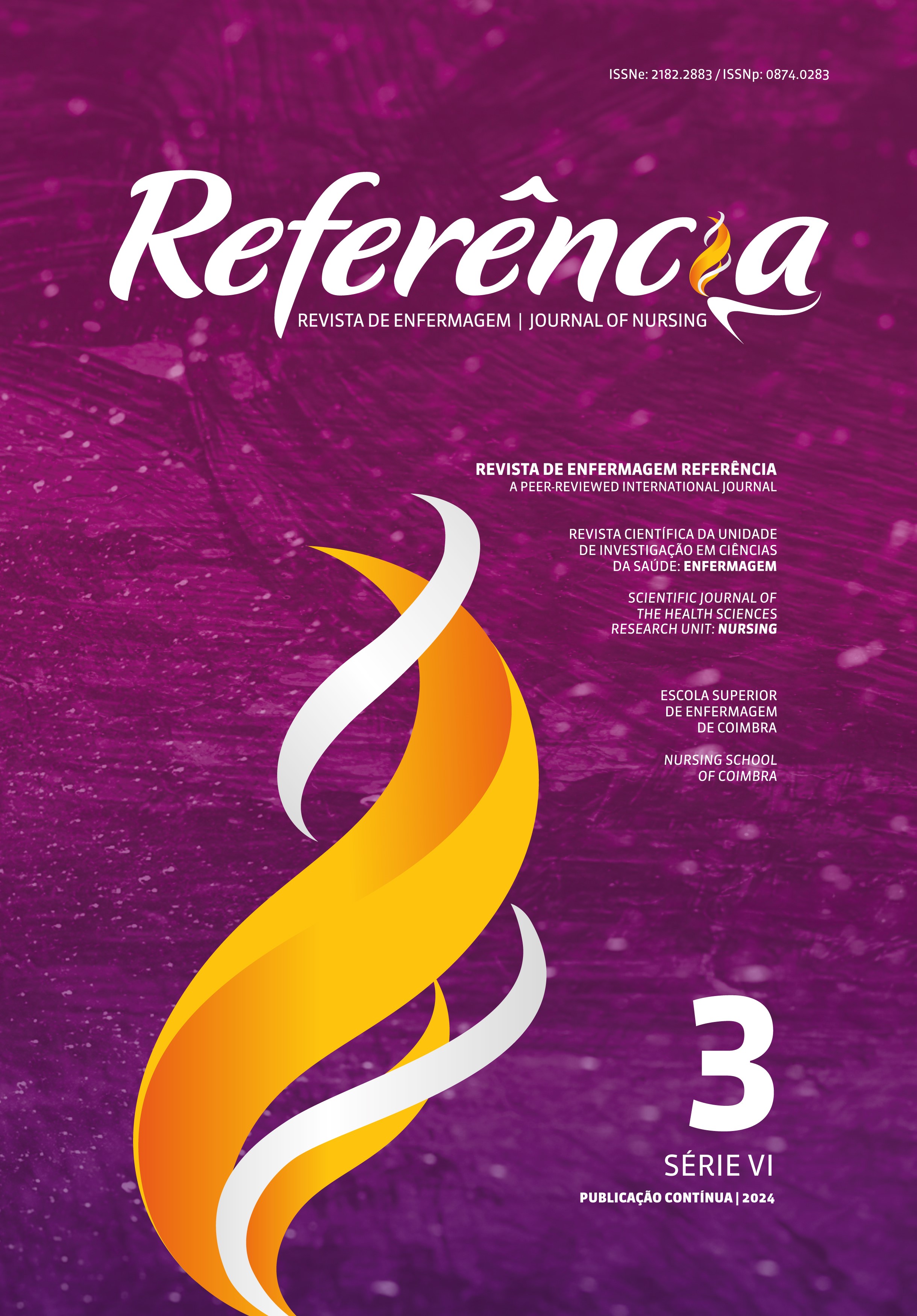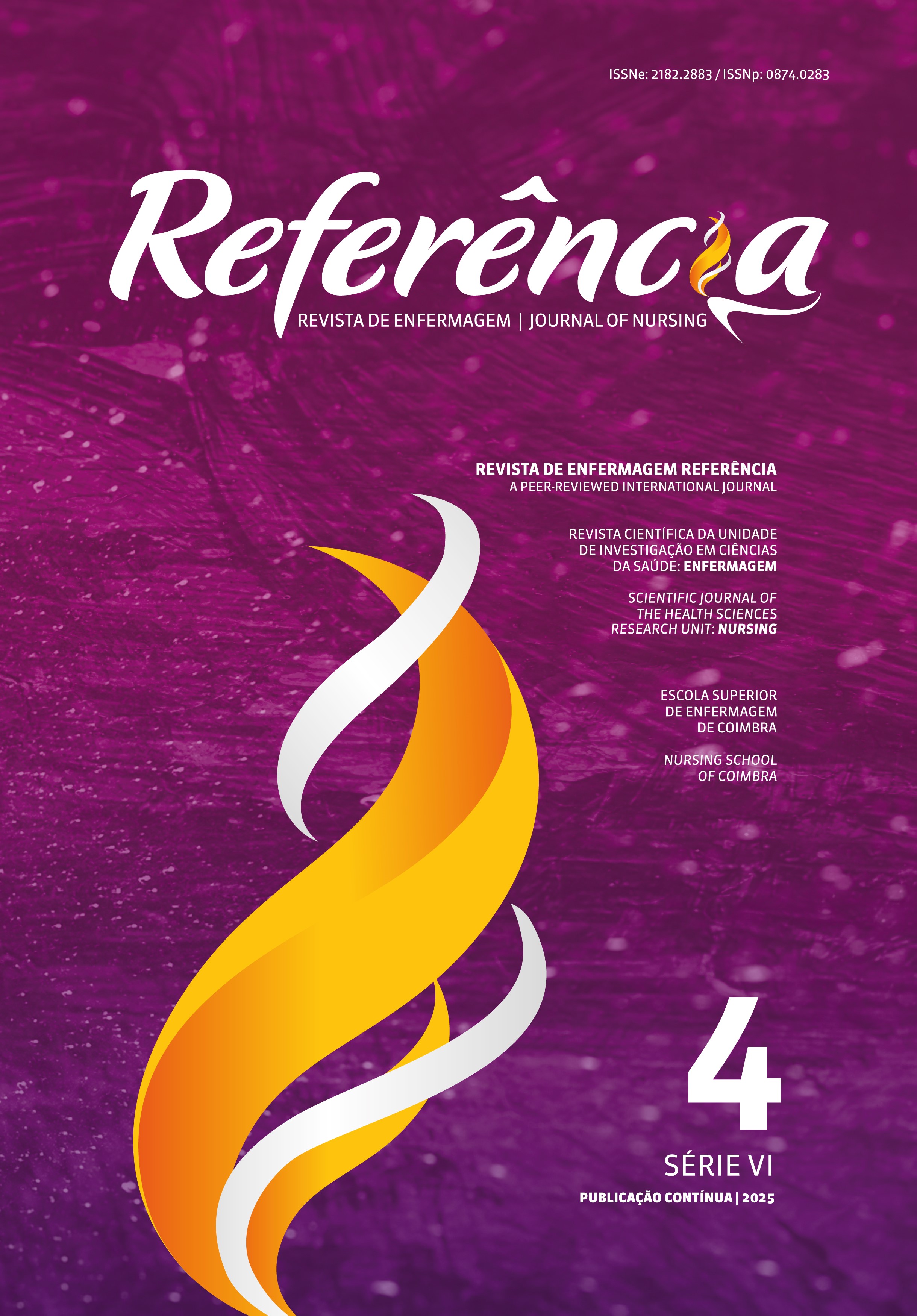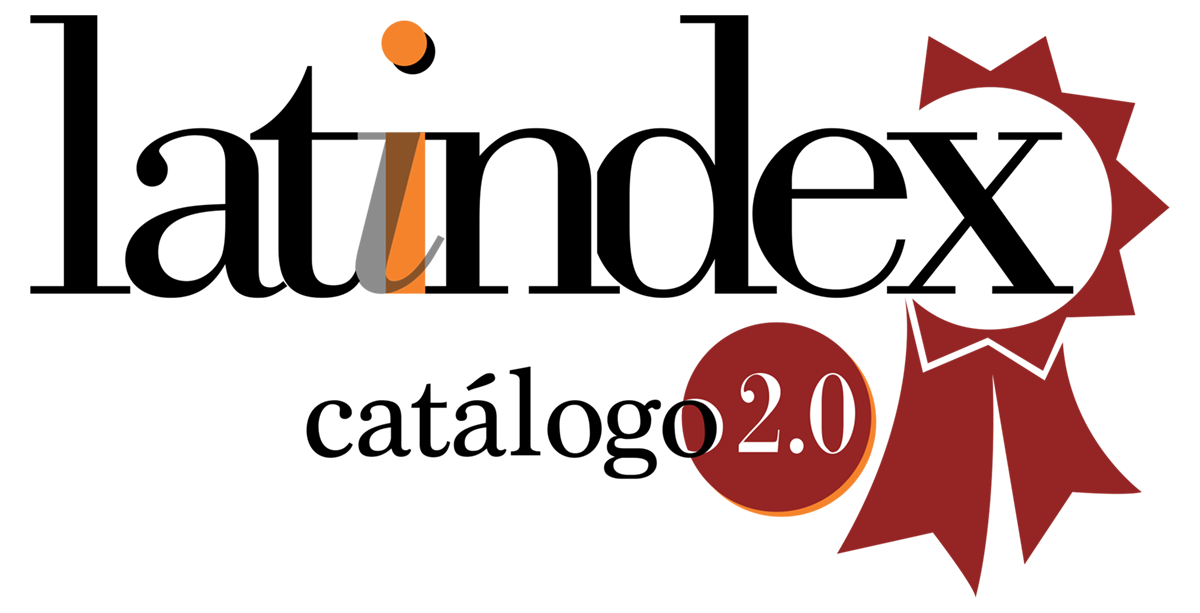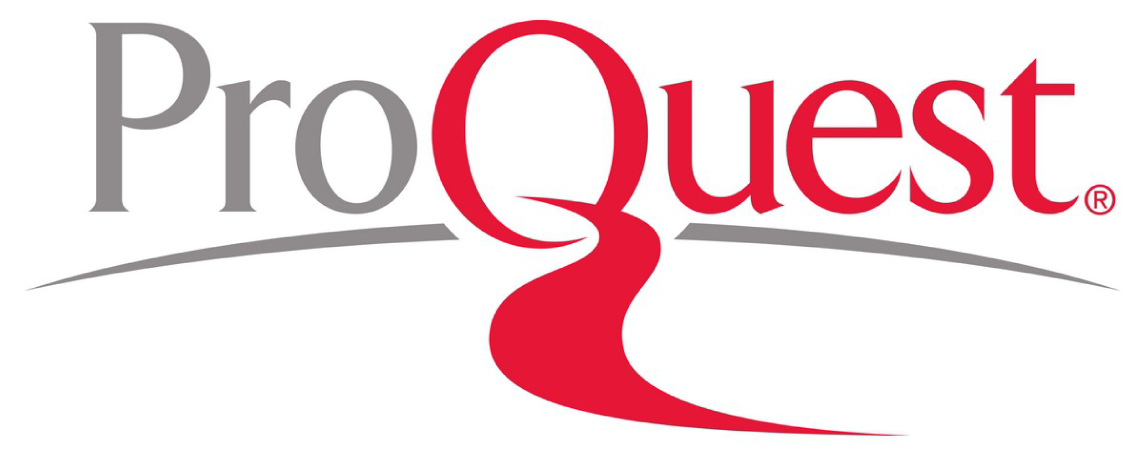1-Hidroxipireno na urina de trabalhadores expostos ao fumo cirúrgico: Relação com os sinais e sintomas
DOI:
https://doi.org/10.12707/RVI23.139.33708Palavras-chave:
saúde ocupacional, hidrocarbonetos policíclicos aromáticos, fumaça, eletrocoagula çãoResumo
Enquadramento: O fumo cirúrgico contém bioaerossóis e compostos químicos como Hidrocarbonetos Policíclicos Aromáticos, que podem causar doenças ocupacionais e até cancro.
Objetivo: Correlacionar a presença do metabólito 1-Hidroxipireno na urina dos trabalhadores com os sinais e sintomas relacionados à exposição ocupacional ao fumo cirúrgico e determinar associação entre os valores de 1-Hidroxipireno na urina ao final do turno com o uso de equipamento de proteção individual.
Metodologia: Estudo transversal de campo, colhidas amostras de urina para determinar a concentração do metabólito 1-Hidroxipireno.
Resultados: A exposição ao fumo cirúrgico aumenta 1,56 vezes o risco de apresentar sinais e sintomas (p = 0,000). A irritação de outras mucosas colaborou com 1,20 vezes o risco de apresentar outros sinais e sintomas atrelados a exposição ao fumo cirúrgico (p = 0,013).
Conclusão: Quanto maior os níveis de 1-hidroxipireno na urina maior a probabilidade de desenvolver sinais e sintomas e o uso dos óculos de proteção apresentou-se como fator protetor reduzindo o risco de apresentar sinais e sintomas.
Downloads
Referências
Alhamdow, A., Zettergren, A., Kull, I., Hallberg, J., Andersson, N., Ekström, S., Berglund, M., Wheelock, C. E., Essig, Y. J., Krais, A. M., Georgelis, A., Lindh, C. H., Melén, E., & Bergström, A. (2021). Low-level exposure to polycyclic aromatic hydrocarbon sis associated with reduced lung function among Swedish young adults. Environmental Research, 197, 1-9. https://doi.org/10.1016/j.envres.2021.111169
Association of PeriOperative Registered Nurses. (2017). Guideline for surgical smoke safety. In Guidelines for perioperative practice (pp. 477-505). Agency for Research on Cancer. (2016). European commission: 12 ways to reduce your cancer risk. https://cancer-code-europe.iarc.fr/index.php/en/ecac-12-ways/pollutants-recommendation/165-any-safe-dose-of-exposure-to-cancer-causing-chemical-substances
Besson, É. F. (2020). Estatística básica. LTC. Bieniek, A. A., Leachi, H. F., Cardoso, B. C., Campos, M. D., Rocha, A. F., & Perfeito Ribeiro, R. (2022). Risco ocupacional: Sinais e sintomas relacionados à exposição ao fumo cirúrgico. Revista SOBECC, 27, e2227850. https://doi.org/10.5327/z1414-4425202227850
Caus, N., Barbosa, K., Leachi, H., Rocha, A., & Ribeiro, R. (2023). Análise da incidência de sinais e sintomas relacionados à exposição ocupacional ao fumo cirúrgico na residência. Revista de Enfermagem Referência, 6(2), 1-8. https://doi.org/10.12707/rvi22082
Code Against Cancer. (2016). Is there any “safe dose” of exposure to cancer-causing chemical substances? https://cancer-code-europe.iarc.fr/index.php/en/ecac-12-ways/pollutants-recommendation/165-any-safe-dose-of-exposure-to-cancer-causing-chemical-substances
Faria, P. M., & Della Rosa, H. V. (2004). Determinação do 1-hidroxipireno em amostras de urina por cromatografia líquida de alta eficiência: Estudo dos parâmetros de validação. Revista Brasileira de Ciência do Solo, 40(2), 255-265. https://doi.org/10.1590/s1516-93322004000200015
García-García, S., Matilla-González, H., Peña, J., Nogal Sánchez, M., Casas-Ferreira, A. M., & Pérez Pavón, J. L. (2022). Determination of hydroxy polycyclic aromatic hydrocarbons in human urine using automated microextraction by packed sorbent and gas chromatography: Mass spectrometry. International Journal of Environmental Research and Public Health, 19(20), 13089. https://doi.org/10.3390/ijerph192013089
Heroor, A. A., Asaf, B. B., Deo, S. S., Lau, E. H., Mok, C. W., Di-Pasco, P. J., Jain, P., & Anand, U. (2022). Occupational hazards of surgical smoke and achieving a smoke free operating room environment: Asia-pacific consensus statement on practice recommendations. Frontiers in Public Health, 10, 1-8. https://doi.org/10.3389/fpubh.2022.899171
Jongeneelen, F. J. (2014). A guidance value of 1-hydroxypyrene in urine in view of acceptable occupational exposure to polycyclic aromatic hydrocarbons. Toxicology Letters, 231(2), 239–248. https://doi.org/10.1016/j.toxlet.2014.05.001
Leachi, H. F., BieniekI, A. A., Peixe, T. S., & Ribeiro, R. P. (2022). Proteção respiratória: Estudo de microscopia eletrônica de varredura dos filtros das máscaras. Research, Society and Development, 11(5), e4011527047. https://doi.org/10.33448/rsd-v11i5.27047
Liu, Y., Zhao, M., Shao, Y., Yan, L., & Zhu, X. (2021). Chemical composition of surgical smoke produced during the loop electro surgical excision procedure when treating cervical intraepithelial neoplasia. World Journal of Surgical Oncology, 19(1), 1-8. https://doi.org/10.1186/s12957-021-02211-8
Mallah, M. A., Changxing, L., Mallah, M. A., Noreen, S., Liu, Y., Saeed, M., Xi, H., Ahmed, B., Feng, F., Mirjat, A. A., Wang, W., Jabar, A., Naveed, M., Li, J.-H., & Zhang, Q. (2022). Polycyclic aromatic hydrocarbon and its effects on human health: An overeview. Chemosphere, 296, 133948. https://doi.org/10.1016/j.chemosphere.2022.133948
Netto, C. M., Leachi, H. F., Stanganelli, N. C., Rocha, A. F., & Ribeiro, R. P. (2021). Uso da máscara N95 por trabalhadores de enfermagem expostos ao fumo cirúrgico. Ciência, Cuidado e Saúde, 20, e55482, 1-7. https://doi.org/10.4025/ciencuidsaude.v20i0.55482
Mirzababaei, A., Daneshzad, E., Moradi, S., Abaj, F., Mehranfar, S., Asbaghi, O., Clark, C. C., & Mirzaei, K. (2021). The association between urinary metabolites of polycyclic aromatic hydrocarbons (PAHs) and cardiovascular diseases and blood pressure: A systematic review and meta-analysis of observational studies. Environmental Science and Pollution Research, 29(2), 1712–1728. https://doi.org/10.1007/s11356-021-17091-4
Olsson, A., Guha, N., Bouaoun, L., Kromhout, H., Peters, S., Siemiatycki, J., Ho, V., Gustavsson, P., Boffetta, P., Vermeulen, R., Behrens, T., Bruning, T., Kendzia, B., Guénel, P., Luce, D., Karrasch, S., Wichmann, H.-E., Consonni, D., Landi, M. T., ... Straif, K. (2022). Occupational exposure to polycyclic aromatic hydrocarbons and lung cancer risk: Results from a pooled analysis of case-control studies (SYNERGY). Cancer Epidemiology, Biomarkers & Prevention, 31(7), 1433-1441. https://doi.org/10.1158/1055-9965.epi-21-1428
Organização das Nações Unidas Brasil. (2015). Transformando nosso mundo: A agenda 2030 para o desenvolvimento sustentável. https://nacoesunidas.org/wpcontent/uploads/2015/10/agenda2030-pt-br.pdf
Occupational Safety and Health Administration. (2015). Hospitals: Surgical suite: Smoke plume. https://www.osha.gov/etools/hospitals/surgical-suite/smoke-plume
Pereira Netto, A. D., Moreira, J. C., Dias, A. E., Arbilla, G., Ferreira, L. F., Oliveira, A. S., & Barek, J. (2000). Avaliação da contaminação humana por hidrocarbonetos policíclicos aromáticos (HPAs) e seus derivados nitrados (NHPAs): Uma revisão metodológica. Química Nova, 23(6), 765–773. https://doi.org/10.1590/s0100-40422000000600010
Sampaio, G. R., Guizellini, G. M., Silva, S. A., Almeida, A. P., Pinaffi-Langley, A. C., Rogero, M. M., Camargo, A. C., & Torres, E. A. (2021). Polycyclic aromatic hydrocarbons in foods: Biological
effects, legislation, occurrence, analytical methods, and strategies to reduce their formation. International Journal of Molecular Sciences, 22(11), 6010. https://doi.org/10.3390/ijms22116010
Shi, R., Li, X., Yang, Y., Fan, Y., & Zhao, Z. (2021). Contamination and human health risks of polycyclic aromatic hydrocarbons in surface soils from Tianjin coastal new region, China. Environmental Pollution, 268, 115938. https://doi.org/10.1016/j.envpol.2020.115938
Yu, C.-L., Hsieh, S.-I., Lin, L.-H., Chi, S.-F., Huang, T.-H., Yeh, S.-L., & Wang, C. (2022). Factors associated with surgical smoke self-protection behavior of operating room nurses. Healthcare, 10(5), 1-14. https://doi.org/10.3390/healthcare10050965
Zhang, X., Yang, L., Zhang, H., Xing, W., Wang, Y., Bai, P., Zhang, L., Hayakawa, K., Toriba, A., Wei, Y., & Tang, N. (2021). Assessing approaches of human inhalation exposure to polycyclic aromatic hydrocarbons: A review. International Journal of Environmental Research and Public Health, 18(6), 1-14. https://doi.org/10.3390/ijerph18063124
Zhou, Y.-z., Wang, C.-q., Zhou, M.-h., Li, Z.-y., Chen, D., Lian, A.-l., & Ma, Y. (2023). Surgical smoke: A hidden killer in the operating room. Asian Journal of Surgery, 9, 3447-3454. https://doi.org/10.1016/j.asjsur.2023.03.06






















